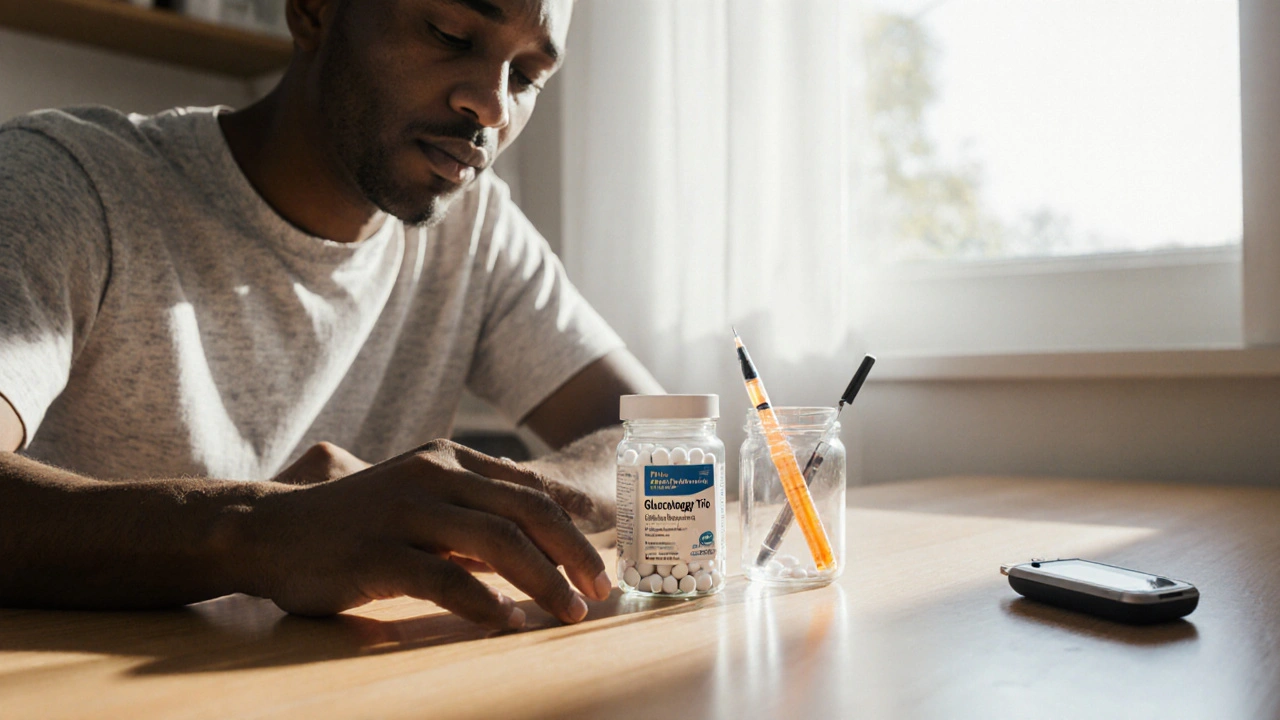Glimepiride: What It Is and Why It Matters
When working with glimepiride, a sulfonylurea tablet that helps lower blood sugar in adults with type 2 diabetes. Also known as Amaryl, it stimulates the pancreas to release more insulin, making it a key tool for many patients.
Glimepiride belongs to the sulfonylurea class, a group of oral drugs that share the same goal: increase insulin output from beta cells. Because it works directly on the pancreas, glimepiride can reduce HbA1c levels by about 1‑1.5% when taken correctly. However, that same action also raises the risk of low blood sugar, or hypoglycemia, especially if you skip meals or mix it with other glucose‑lowering agents.
What You’ll Want to Know About Using Glimepiride
The first thing to understand is the link between glimepiride and type 2 diabetes. This chronic condition is characterized by insulin resistance and impaired insulin production. Glimepiride helps bridge the gap by coaxing whatever insulin the pancreas can still make to get into the bloodstream. It’s not a cure, but it can keep glucose levels in the target range when paired with diet, exercise, and sometimes other meds like metformin.
Dosage starts low—usually 1 mg once a day with breakfast. Your doctor may increase it gradually, never exceeding 8 mg daily. The rule of thumb is to take it at the same time each day to maintain steady drug levels. If you notice dizziness, shakiness, or sweating after a meal, those could be signs of hypoglycemia, and you should test your blood sugar right away.
Monitoring is crucial. A reliable blood glucose meter lets you see how glimepiride is affecting you in real time. Aim for fasting levels between 80‑130 mg/dL and post‑meal peaks below 180 mg/dL. Recording these numbers helps your healthcare team adjust the dose before any serious side effects develop.
Speaking of side effects, the most common ones are mild: headache, nausea, or a slight increase in weight. More serious concerns include severe hypoglycemia, allergic skin reactions, and, rarely, liver issues. If you notice yellowing of the skin or dark urine, seek medical attention immediately.
Drug interactions matter, too. Combining glimepiride with other sulfonylureas, certain antibiotics, or high‑dose aspirin can amplify the blood‑sugar‑lowering effect. Always tell your pharmacist about every medication, supplement, or herbal product you use.
Pregnancy and breastfeeding are special cases. Glimepiride crosses the placenta and isn’t the first‑line choice for gestational diabetes. If you become pregnant while on the drug, discuss alternatives with your obstetrician promptly.
Finally, lifestyle plays a big role. A balanced diet rich in fiber, regular aerobic activity, and weight management can boost glimepiride’s effectiveness and lower the dose you need. Think of the medication as a partner in a broader plan rather than a stand‑alone solution.
Below you’ll find a collection of articles that dive deeper into each of these topics—dosage tricks, side‑effect management, real‑world patient stories, and the latest research on sulfonylureas. Use them to fine‑tune your approach and stay informed about the best ways to keep your blood sugar steady.
Glucophage Trio vs Alternatives: Full Comparison for Type2 Diabetes
A detailed side‑by‑side look at Glucophage Trio versus common diabetes drugs, covering mechanisms, efficacy, safety and cost to help you pick the right therapy.






